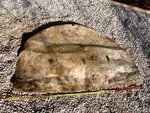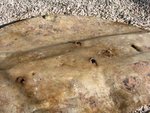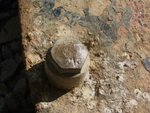steve3883
Recruit
Hi there,
This my first post on the forum, I live in Normandy and regularily go metal detecting on the battlefields, I mainly find items related to the war on the ground but recently I found this large aluminium panel.
It is 3 feet long by 2 feet high, semi-circular and has some sort of knob/catch at the top marked only with a "Z". There is someblack paint and red primer left in some places and there are four bullet/schrapnel holes in it.
I found this lodged in a hedgerow near Sainteny in Normandy, I know that a P-47 was shot down a couple of fields away from where I found the panel, I have also een told by some of the local older people that a couple of German aircraft were shot down in the area in July 44.
If anyone recognises the panel and which aircraft it was off I would love to know!
Thanks in advance,
Steve (France)
This my first post on the forum, I live in Normandy and regularily go metal detecting on the battlefields, I mainly find items related to the war on the ground but recently I found this large aluminium panel.
It is 3 feet long by 2 feet high, semi-circular and has some sort of knob/catch at the top marked only with a "Z". There is someblack paint and red primer left in some places and there are four bullet/schrapnel holes in it.
I found this lodged in a hedgerow near Sainteny in Normandy, I know that a P-47 was shot down a couple of fields away from where I found the panel, I have also een told by some of the local older people that a couple of German aircraft were shot down in the area in July 44.
If anyone recognises the panel and which aircraft it was off I would love to know!
Thanks in advance,
Steve (France)



